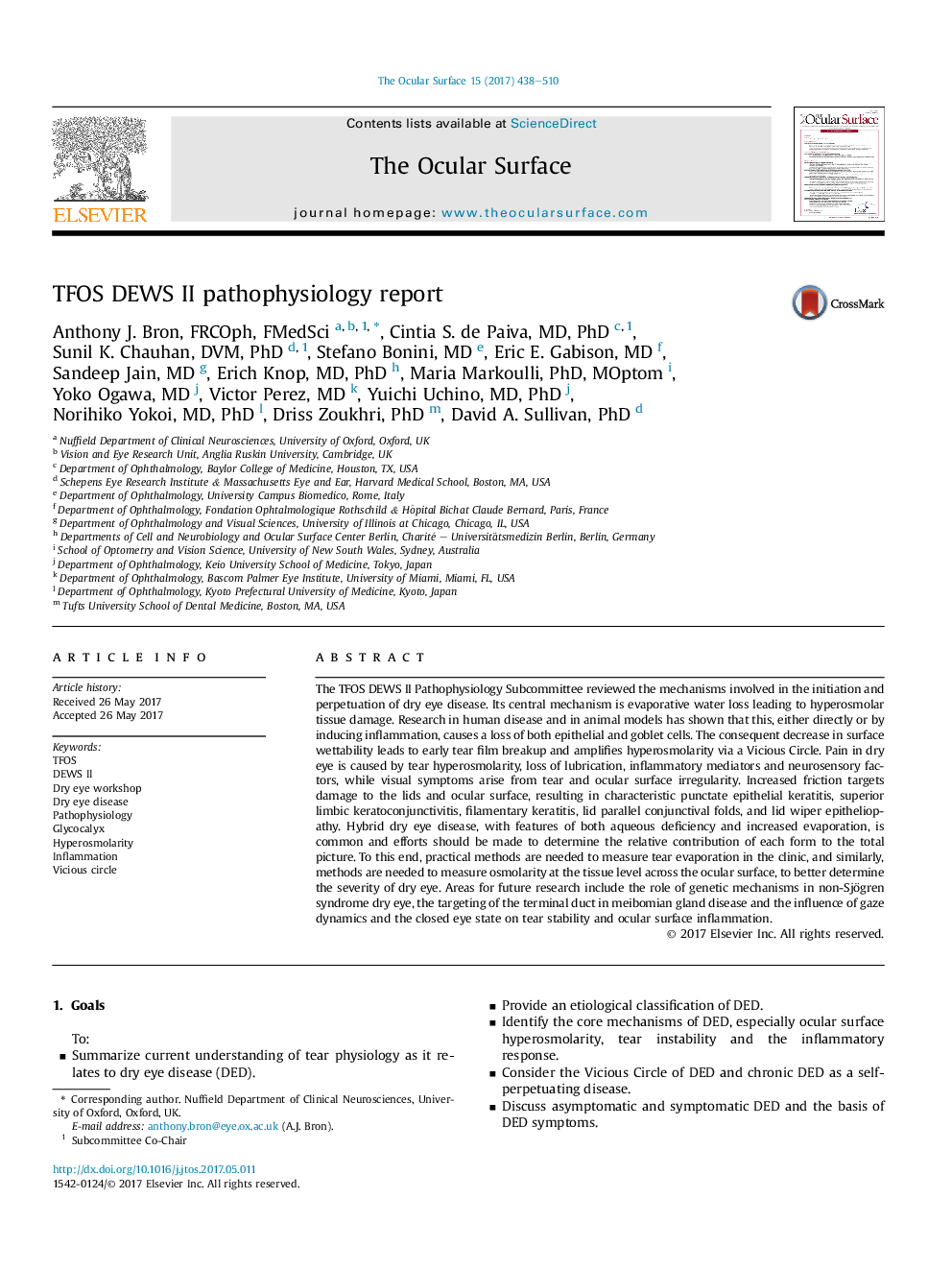| Article ID | Journal | Published Year | Pages | File Type |
|---|---|---|---|---|
| 8591283 | The Ocular Surface | 2017 | 73 Pages |
Abstract
The TFOS DEWS II Pathophysiology Subcommittee reviewed the mechanisms involved in the initiation and perpetuation of dry eye disease. Its central mechanism is evaporative water loss leading to hyperosmolar tissue damage. Research in human disease and in animal models has shown that this, either directly or by inducing inflammation, causes a loss of both epithelial and goblet cells. The consequent decrease in surface wettability leads to early tear film breakup and amplifies hyperosmolarity via a Vicious Circle. Pain in dry eye is caused by tear hyperosmolarity, loss of lubrication, inflammatory mediators and neurosensory factors, while visual symptoms arise from tear and ocular surface irregularity. Increased friction targets damage to the lids and ocular surface, resulting in characteristic punctate epithelial keratitis, superior limbic keratoconjunctivitis, filamentary keratitis, lid parallel conjunctival folds, and lid wiper epitheliopathy. Hybrid dry eye disease, with features of both aqueous deficiency and increased evaporation, is common and efforts should be made to determine the relative contribution of each form to the total picture. To this end, practical methods are needed to measure tear evaporation in the clinic, and similarly, methods are needed to measure osmolarity at the tissue level across the ocular surface, to better determine the severity of dry eye. Areas for future research include the role of genetic mechanisms in non-Sjögren syndrome dry eye, the targeting of the terminal duct in meibomian gland disease and the influence of gaze dynamics and the closed eye state on tear stability and ocular surface inflammation.
Related Topics
Health Sciences
Medicine and Dentistry
Ophthalmology
Authors
Anthony J. FRCOph, FMedSci, Cintia S. MD, PhD, Sunil K. DVM, PhD, Stefano MD, Eric E. MD, Sandeep MD, Erich MD, PhD, Maria PhD, MOptom, Yoko MD, Victor MD, Yuichi MD, PhD, Norihiko MD, PhD, Driss PhD, David A. PhD,
